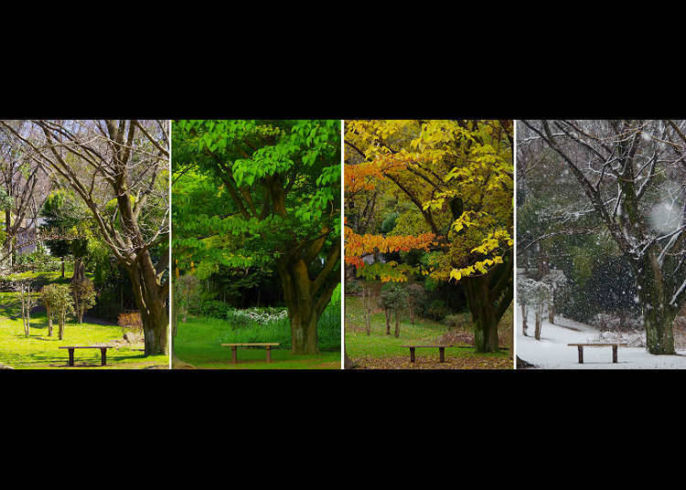Japan’s weather is among the best in the world. Lets get through some of it’s seasons for which you need to be prepared if you are planning to visit. Japan’s weather brings it all. The majestic cherry blossoms of spring. The warmth of summer. The breathtaking autumn leaves. The crisp white winterlandscapes. Each of the four seasons of Japan brings a new face to the country, each as beautiful as the next.
Deciding which side of Japan you want to see is vital to planning the perfect trip! To help you plan, we’ve created the ultimate guide to the seasons of Japan and its climate. Use this guide to get an idea of what to expect in Japan throughout the year, so you can plan the trip you’ve been dreaming of!
What’s Japan Like in Spring?
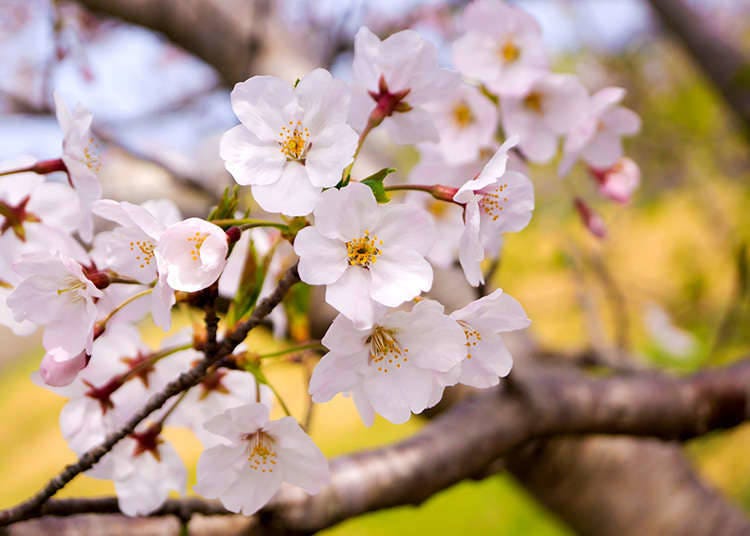
Spring brings glorious weather to much of Japan, with cool, sunny days becoming more frequent as this favorite of the seasons of Japan progresses. This makes it one of the best times to visit Japan!
However, chilly nights and rain are still abundant, so be sure to check the forecast before heading out. Northern areas, such as Hokkaido and Tohoku, are prone to cold weather until May, and mountainous regions will still be covered in snow across Japan.
When is spring in Japan?
Spring in Japan is from March to May.
Things to do in Japan in Spring
After a cold winter, the much-welcomed warming of Japan means it’s time to get back outdoors! Hiking through forests, traversing cities, and chilling out in parks are just some of the ways you can savor this fantastic of seasons of Japan. The biggest highlight in spring is the world-famous cherry blossoms, which bloom in Tokyo from late-March to early-April.
However, if you’re visiting a famous cherry blossom spot, such as Ueno Park or Shinjuku Gyoen, be prepared for crowds, especially on weekends. Dozens of other stunning spring flowers, including roses, tulips, wisteria, and rapeseed, many of which have their own dedicated parks and festivals, can also be found!
Packing for Spring in Japan
As spring‘s weather can be unpredictable, packing for both warm and cold conditions is advised. If you’re heading to Japan’s north in early spring, snow gear, such as puffer jackets, snow boots, scarves, and beanies are a must.
When is Rainy Season in Japan?

From the end of May to mid-July is the “rainy season” called “Tsuyu.” Even when it is not raining, the humidity gets high as the temperature rises. The rainy season of Japan starts early in the southern part of Japan and gradually shifts northward, which takes about a month. However, Hokkaido does not experience Tsuyu. When the rainy season ends, the real hot summer begins.
What’s Japan Like in Summer?
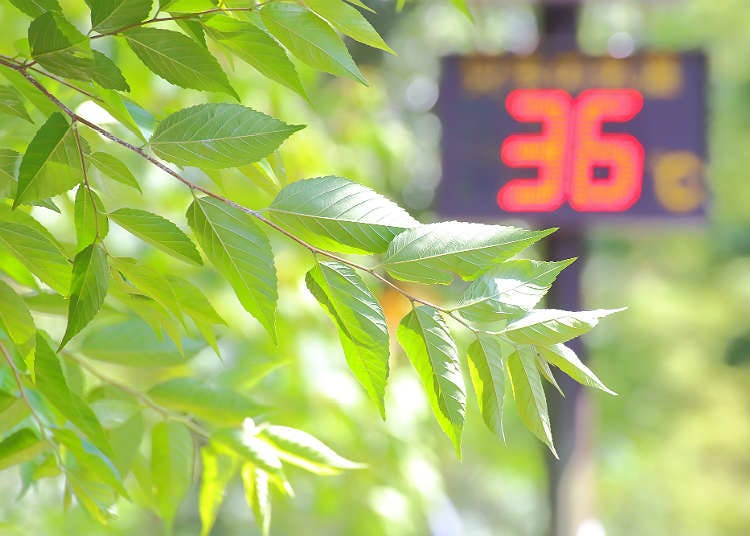
Humid, humid, humid! From June to late July, thick humidity will dominate due to the meeting of cold air from the north and warm air from the south. This phenomenon will make you sweat quickly and long for an air-conditioned room.
While referred to as the ‘rainy season‘ in English, central metropolises like Tokyo and Osaka don’t have much more rainfall than spring. However, the rain during this period can be sudden and heavy or can consist of light showers that span the entire day. Be prepared to get wet at some point.
Heading up to Hokkaido is a great way to escape this weather, as the island is too far north to experience a proper rainy season. Once July passes, the temperature soars with days as high as 35℃ (95℉), and clear blue skies become commonplace.
Be on the lookout for typhoons. While they may occur at any time during summer or autumn, they are most common in August and September, and may disrupt your travel plans and pose a danger.
When is summer in Japan?
Summer in Japan is from June to August.
Things to do in Japan in Summer
Summer means festival season in Japan! While not so common in June, late July and August are brimming with traditional and modern festivals all across the country.
Some prominent summer festivals include Shinjuku Eisa Festival in Tokyo, the Gion Festival in Kyoto, and the Tenjin Festival in Osaka. Often coinciding with festivals, breathtaking fireworks shows can also be found almost every night somewhere across Japan, making for a magical way to spend an evening.
If you’re looking to beat the heat, there’s nothing more energizing than taking a dip at one of Japan’s hundreds of stunning beaches, many of which can be reached from major cities. Some refreshing day-trip beaches from Tokyo can be found here!.
Packing for Summer in Japan
Wearing light, breezy clothes will help you feel fresh amid this challenging weather. If you’re planning on hiking or heading north, also pack a set of warmer clothes. Sunglasses and a hat are another must! Buy yourself some sunscreen and a cheap umbrella at a convenience store once you arrive.
When is Typhoon Season in Japan?
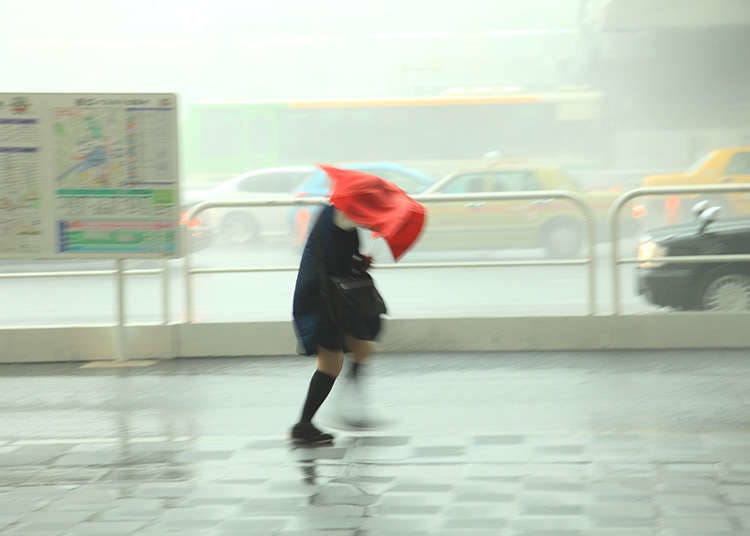
Typhoon season in Japan is toward August and September. Areas in the path of the typhoon will experience strong rain and high winds, which might paralyze public transportation.
What’s Japan Like in Autumn?
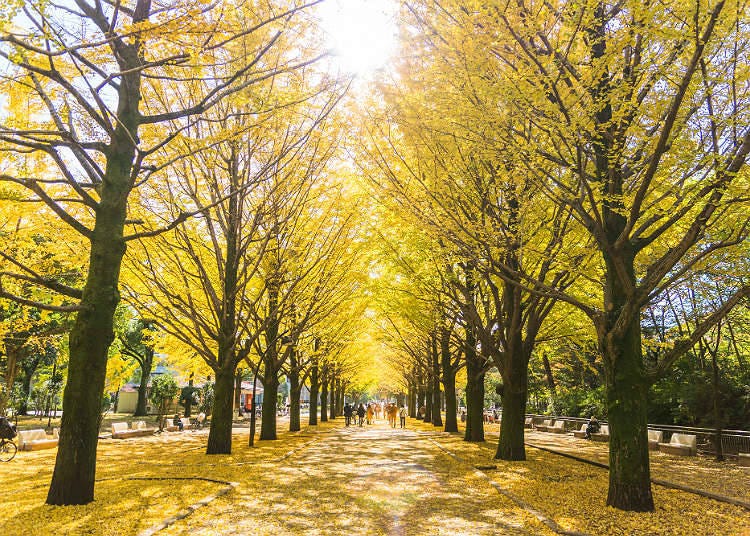
Autumn is a well-received break from the crushing late summer heat, with temperatures gradually dropping each week and the air becoming fresher and drier. Tokyo’s climate is particularly pleasant during October and November, with comfortable days and brisk nights providing a delightful atmosphere to enjoy the metropolis. Okinawa is also very agreeable, with daytime temperatures staying well above 20℃ (68℉). However, early autumn is home to the typhoon season, which often wreaks havoc on Japan, particularly affecting southern areas like Okinawa and Kyushu. Keep an eye on the news for warnings.
Just as the cherry blossoms attract crowds in the spring, many tourists gather in Nara prefecture, Kyoto prefecture, and Nikko city to enjoy the beautiful tints of autumn.
In Tokyo, November is the time when the leaves of deciduous trees turn to red and yellow, painting the mountains and streets beautiful colors. Autumn is also a time when many cultural events are happening.
When is autumn in Japan?
Autumn in Japan is from September to November.
Things to do in Japan in Autumn
Autumn is the season to turn-off the air-conditioner and get back outdoors. The low-humidity and crisp air make it perfect for long days of sightseeing. Once the leaves start to change color, explore the parks and mountains to take in the vibrant array of red, yellow, and brown that takes over the mainland. Fortunately, this phenomenon lasts across Japan from October to December so that it can be enjoyed on your schedule!
Packing for Autumn in Japan
Similar to spring, autumn requires a mix of both warm and light clothing. Shorts and T-shirts can be worn in early autumn if you’re spending time in cities like Tokyo or Osaka, although chilly nights may require a jacket and long pants. If you’re heading to Tohoku or Hokkaido during the latter half of the season, pack warmer than light clothing, and be prepared for snow in November.
What’s Japan Like in Winter?
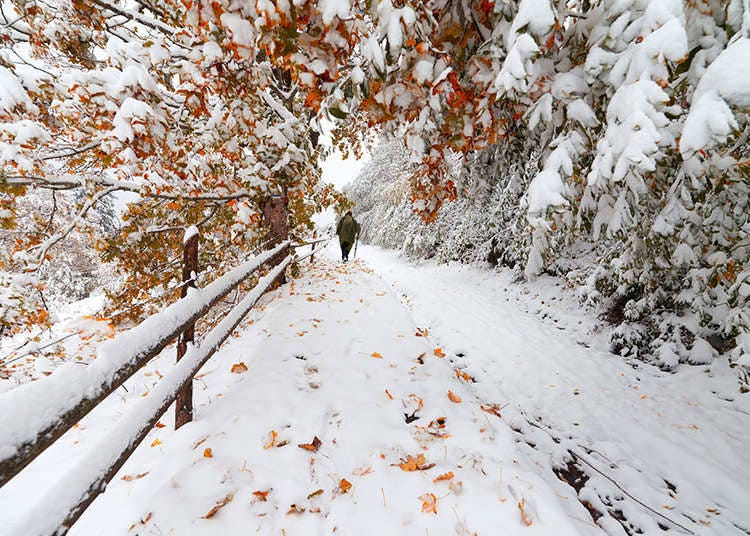
Your experience of winter in Japan will depend on the region. Popular cities, such as Tokyo, Osaka, Hiroshima, and Kyoto, have relatively mild weather, with snow rare and rainfall minimal. While temperatures can get very low, these sunny, dry, and calm days are the perfect opportunity to take in these metropolises without large crowds.
Harsher winter conditions are found in western and northern Japan, which are mostly frozen over and filled with days of storms, blizzards, rain, and heavy snowfall. Prefectures such as Niigata, Nagano, Yamagata, Akita, Fukushima, and Aomori are blanketed in meters of pure white snow, which transforms the landscape into a spectacular winter wonderland.
While Hokkaido doesn’t receive as much snow as mainland Japan, it is still covered with snow and ice for the entirety of winter and is constantly freezing. For those who hate the cold, Okinawa offers a comfortable escape with moderate temperatures and low rainfall, albeit being a little brisk at night.
When is winter in Japan?
Winter in Japan is from December to February.
Things to do in Japan in Winter
Despite the cold, Japan doesn’t slow down during winter – quite the opposite! Winter is full of festivals, fireworks, exhibitions, and fun! Most famous are the hundreds of lights displays, known as illuminations, that cover Japan. The snow festivals of February, including the Sapporo Snow Festival and the Hirosaki Castle Snow Lantern Festival, are other must-see winter wonders!
Of course, if you’re a skier, then Japan’s slopes and powder snow, lovingly referred to by fans as Japow, is first-class. The excellent conditions in Hokkaido are well worth the hefty travel, while Nagano and Niigata provide amazing ski resorts easily assessed from Tokyo by bullet train.
Packing for Winter in Japan
If you’re spending your time in cities like Tokyo, Osaka, Kyoto, Hiroshima, and Nagasaki, a basic winter array of sweaters, pants, jackets, and scarves will suffice. If you’re planning on visiting frigid areas, such as Gifu, Nagano, Yamagata, Akita, Fukushima, Aomori, and Hokkaido, investing in some high-quality snow gear is a must.
This includes puffer jackets, snow boots, beanies, thermal underwear, waterproof pants, and more. Many of the cities and towns here will be blanketed with snow and ice and are swept by bone-chilling winds, making traversing them in the same clothes you were wearing in Tokyo potentially dangerous.
